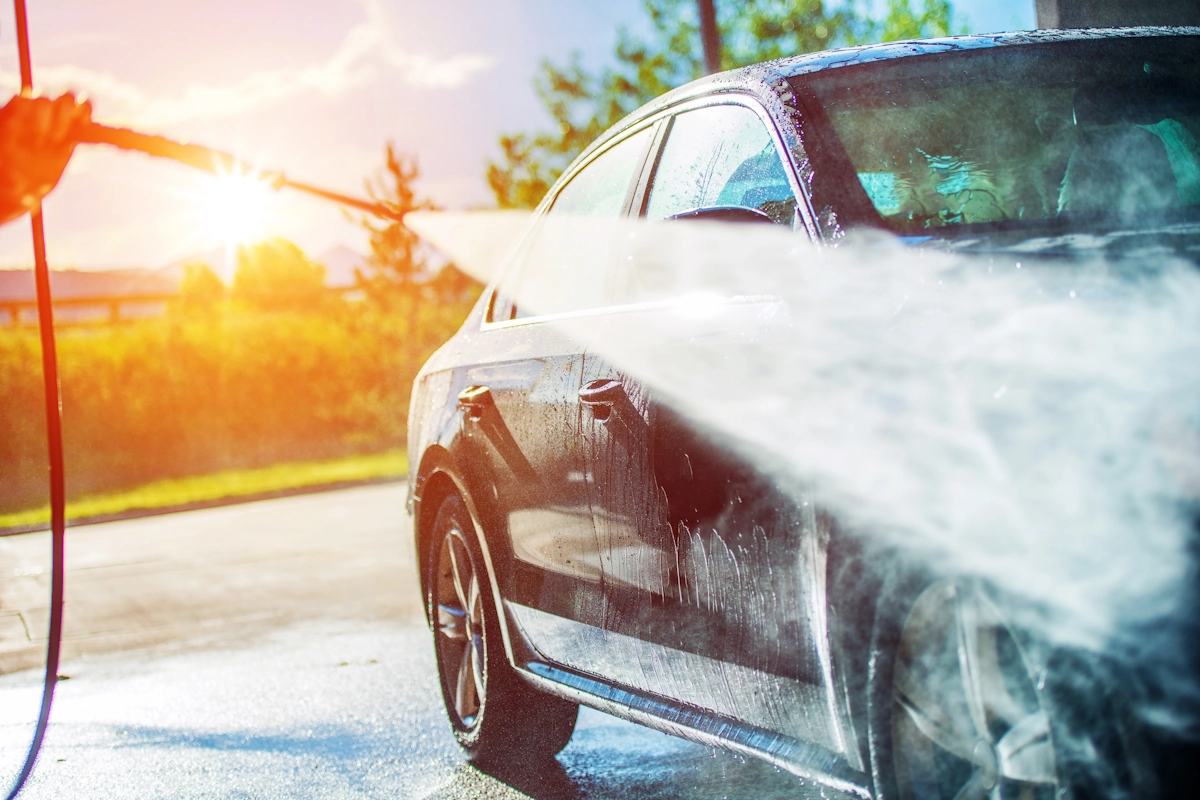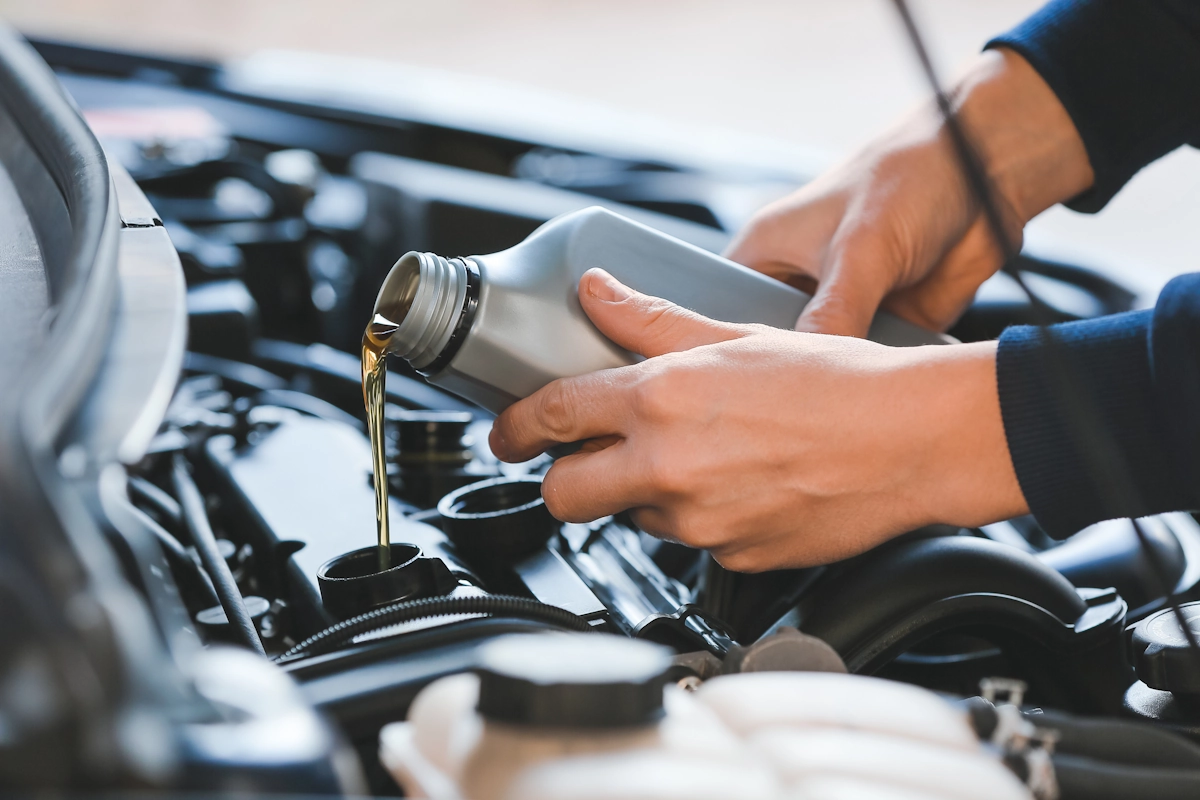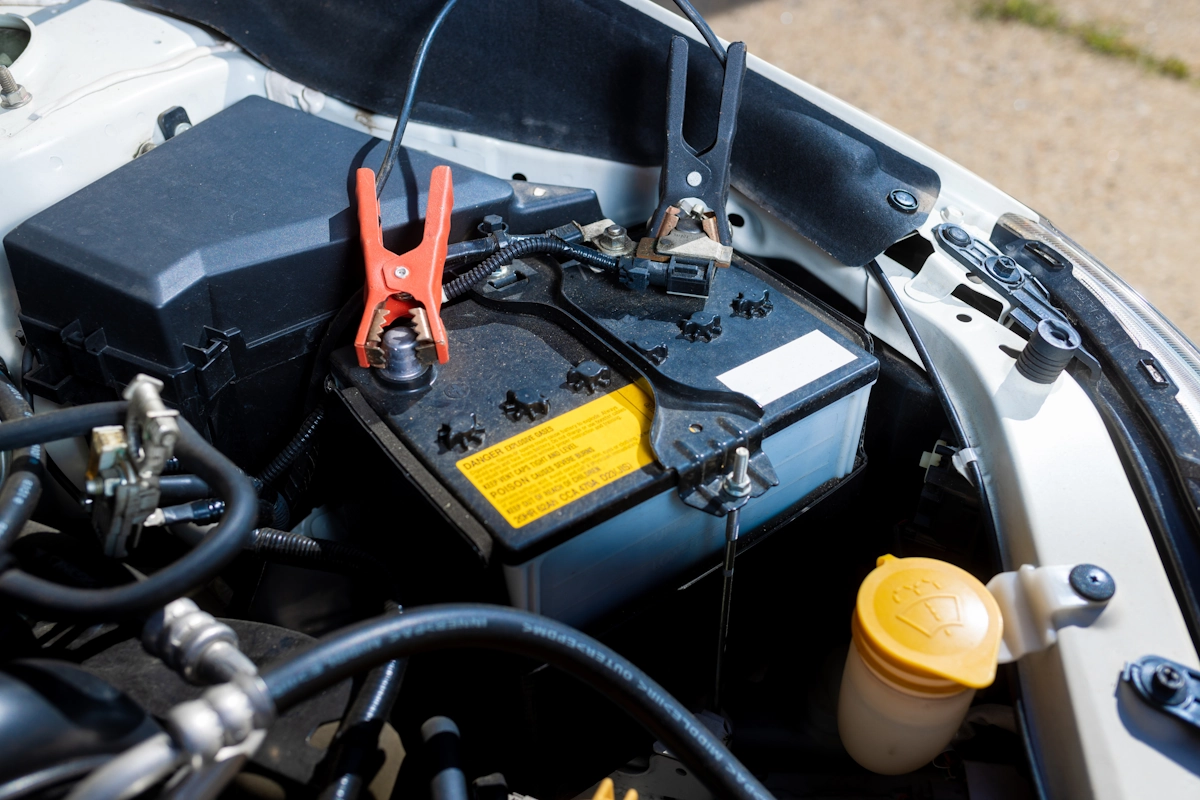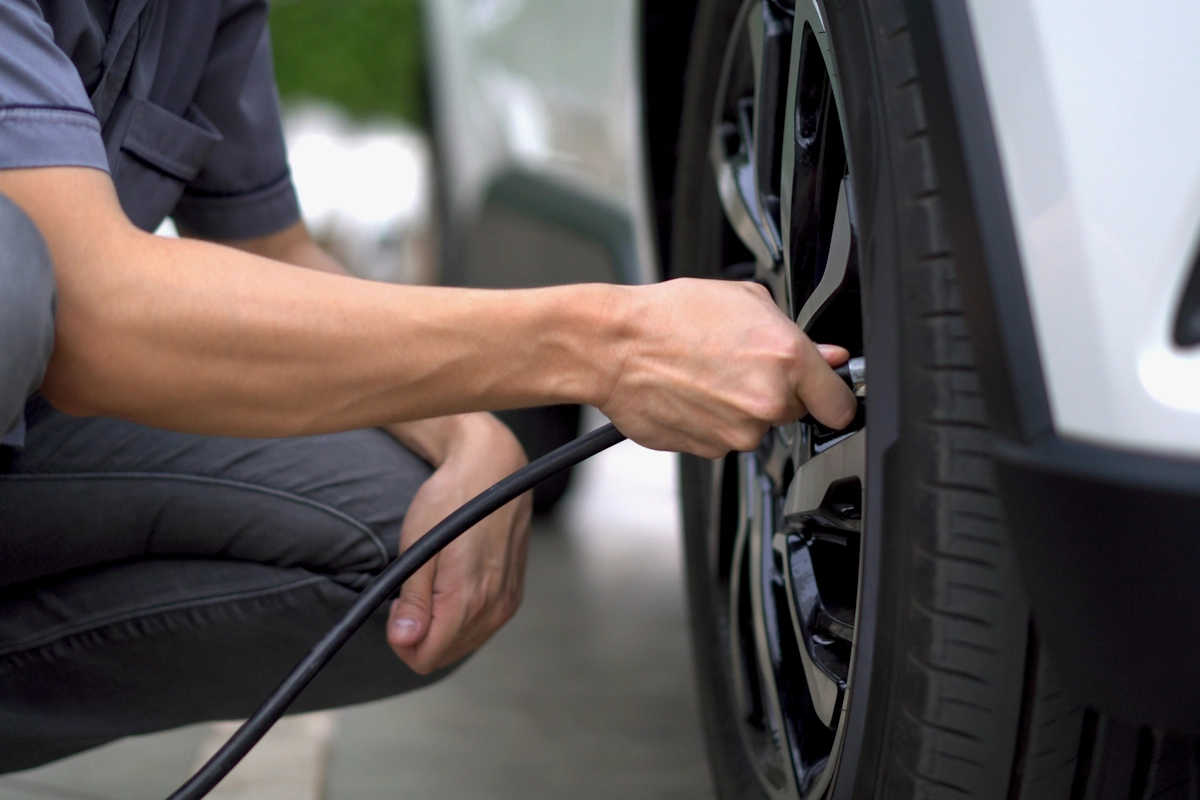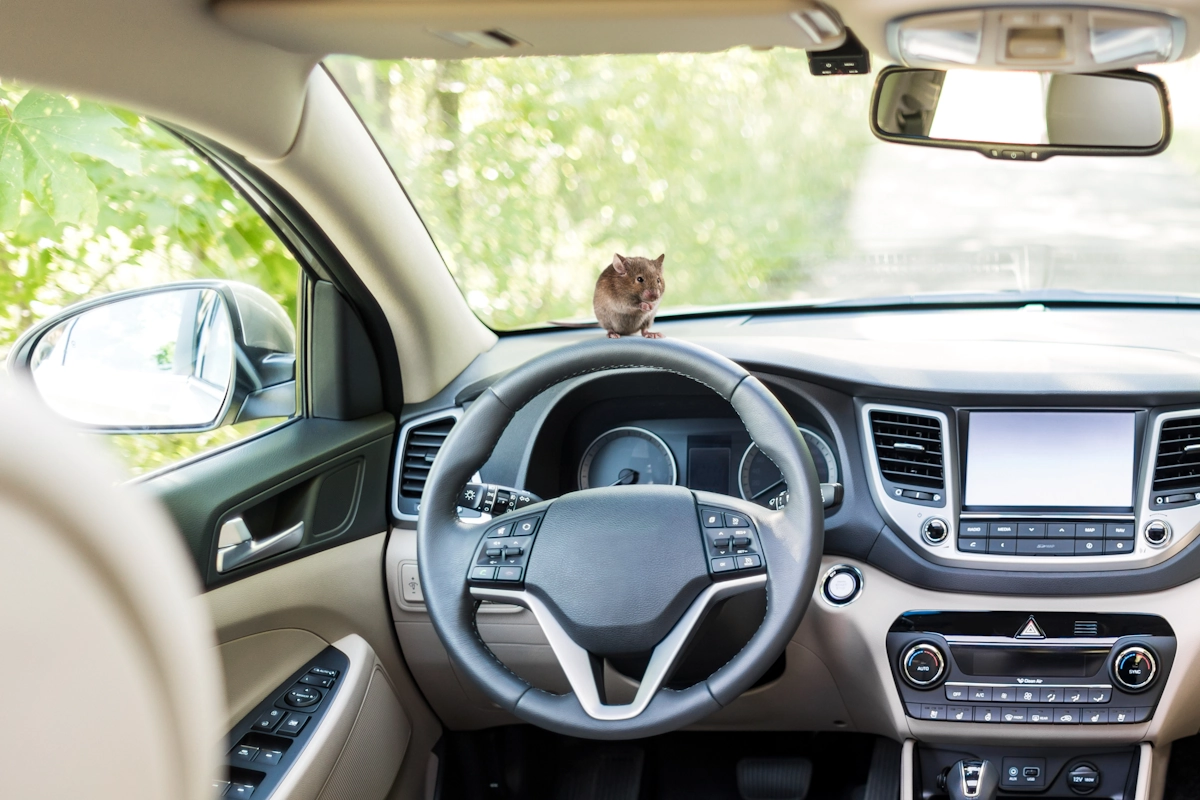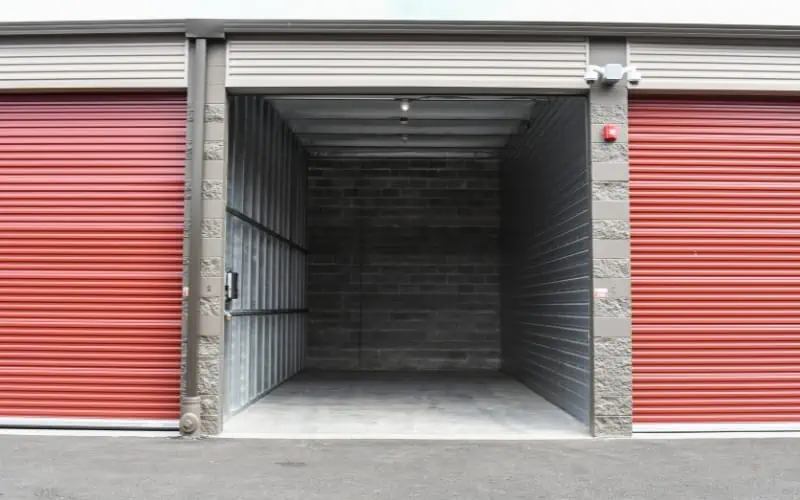8 Tips for Winter Car Storage: The Complete Care Guide for Your Vehicle
As the leaves start their final descent and the crisp air signals the onset of sweater weather, there’s a whole bunch of us who begin to bid farewell to our beloved convertibles, classic roadsters, or that trusty summer ride. Yep, it’s that time of the year again—winter is fast approaching, and just like we prep our homes for the cold, our four-wheeled friends need a cozy nook to hibernate in as well.
Stowing away your vehicle for the winter isn’t as simple as locking the doors and throwing a tarp over the top. Nope, it needs a little more TLC to ensure that once the winter wonderland thaws away, your car is as ready to embrace the open roads as you are. From choosing the right spot to snuggle up for the cold months to ensuring its engine can purr at a moment’s notice, each step is key in protecting your car.
In this guide, we’ll steer you through the 8 essential tips to prep your vehicle for winter storage. We’re talking about the full deal—cleaning, fluid checks, battery care, and more—to make sure that when the flowers start blooming, your car is in tip-top condition to hit the road. So, let’s get cracking and turn your car into the ultimate winter-ready machine!
Tip 1: Clean and Wax On
Imagine pulling your car out of storage come spring, and it’s just as shiny and crumb-free as you left it. Sounds like a dream, right? Well, it’s totally doable with a little pre-storage pampering. So, grab your sponges and chamois cloths, because we’re diving into the car spa day!
Exterior Excellence: First, give your car a good wash. We’re not talking about a quick rinse, but a thorough clean from top to bottom. Dirt, bird droppings, and road salt can cling to your paint and cause damage over time, so it’s crucial to scrub every nook and cranny. Once it’s squeaky clean, apply a coat of quality wax. This acts like a warm winter coat, providing a protective barrier against moisture and rust.
Interior TLC: Now, let’s move to the inside. Clear out those old coffee cups, fast-food wrappers, and anything else that’s made a home in your car. Vacuum the carpets, seats, and don’t forget the trunk. A deep clean isn’t just about aesthetics—it also keeps pests at bay, because trust me, mice love snacking on those forgotten french fries. To keep your car smelling fresh, consider a moisture absorber or a new car scent air freshener. Just imagine opening your car door to that new car smell after a long winter—it’s like a breath of fresh spring air!
Seal the Deal: Lastly, don’t forget the small but mighty step of sealing your windows and doors. This can prevent moisture from getting in and doing a number on your car’s interior. A good rubber conditioner can keep door seals soft and watertight, and it might be worth cracking the windows just a smidge to keep air circulating.
Cleaning might not be the most thrilling part of car care, but it’s a huge factor in keeping your vehicle in mint condition while it’s out of commission. And when you slide back into that clean, well-kept car after its winter hibernation, you’ll be thanking yourself for the effort. Next up, we’ll talk about the lifeblood of your car – the fluids.
Tip 2: Fluids and Filters
Your car’s fluids are like its blood, and just as you wouldn’t want to go into hibernation with a cold, you wouldn’t want your car to go into storage with old, dirty fluids. Here’s how to give your car the internal fortitude to withstand the winter chill.
Oil’s Well That Ends Well: Old oil can be a real grinch when it comes to the health of your engine. Contaminants within used oil could cause corrosion over time, and that’s the last thing you want while your car’s taking a winter nap. So, let’s kick off with an oil change. Fresh oil will ensure that your engine is coated with a clean, protective layer from the get-go.
Cool Runnings: Next up is coolant – it’s got ‘cool’ in the name for a reason. Make sure your antifreeze is at the right level and the mixture is correct; usually a 50/50 blend of antifreeze and water does the trick to prevent freezing and boiling over. While you’re at it, give a nod to your brake fluid and power steering fluid, too. Top them off if they’re begging for attention.
Transmission and Brake Systems Check: Don’t forget your transmission fluid and brake fluid. These are often overlooked heroes that keep your car in fine fettle. If they’re due for a change, now’s the time. It’s like ensuring your car has a full belly before it hibernates.
Filter Through the Bad Stuff: Finally, take a peek at your filters – that includes oil, air, fuel, and cabin filters. They’re the unsung guardians that keep impurities from messing with your car’s internals. A clean bill of health for your filters means a cleaner, happier car while it rests.
Getting your car’s fluids and filters in order is like making sure it has a warm, comfy blanket and a cup of hot cocoa before bed. It’s all about preparing your vehicle from the inside out to face the winter. Up next, we’ll talk about how to keep that battery alive and kicking, because nobody likes the cold shoulder, especially from a car.
Tip 3: Keep That Battery Charged
The battery is the heartbeat of your car. And keeping it in tip-top shape over the cold winter months is imperative. You don’t want to come back to a car that won’t start because the battery decided to take a permanent vacation.
The Trickle Down Effect: A battery tender is your best bud for maintaining the battery’s charge over winter. This nifty gadget delivers enough charge to keep the battery from losing all its juice. It’s like a life support system, but for your car’s battery. Just hook it up according to the manufacturer’s instructions, and it’ll dole out just the right amount of power to keep things ticking.
Full Belly: Before you connect the charger, make sure the battery is fully charged. A battery with a good, full charge is less likely to freeze than one that’s partially charged. And a frozen battery is about as good as a snowman in summer – not very.
Clean as a Whistle: Give your battery some love with a good clean. Detach the cables (negative cable first, remember!), and wipe away any corrosion on the terminals with a mix of baking soda and water. A clean connection ensures your trickle charger is effective and your battery isn’t being eaten away by battery goblins (also known as corrosion).
Tight and Tidy: Once everything’s clean and dry, reconnect your cables (positive cable first this time) and ensure they’re snug. A loose connection can mean power loss, and that’s a big no-no for winter storage.
Keeping your battery charged and cared for over the winter means you won’t miss a beat when it’s time to hit the road again. Next, we’re going to roll into the world of tires, and how to keep them round and sound while your car’s on downtime.
Tip 4: Tires – Don’t Let Them Down
While your car’s taking a breather, its tires are still shouldering the load. Let’s make sure they’re ready for the rest as much as the rest of the ride.
Inflate the Situation: First, pump your tires to the recommended PSI. Tires tend to lose pressure over time, and under-inflated tires can develop flat spots when a car sits too long. Think of proper inflation as a good night’s rest for your tires – absolutely essential.
Avoid Flat-Out Trouble: For those who want to go the extra mile, consider placing your car on jack stands to take the weight off the tires entirely. This can prevent those dreaded flat spots and extend the life of your tires. Just make sure your car is stable and that the stands are placed under the vehicle’s recommended lifting points.
Rotate to Relieve Stress: Before parking for the long haul, give those tires a last-minute twirl. Rotating your tires can ensure they wear evenly, so you don’t come back to find one tire has shouldered more burden than the others.
Cover Up: If you’re storing your car in an outdoor space, tire covers can be a lifesaver. They’ll protect the rubber from the elements and help prevent cracking and dry rot. It’s like sunscreen for your tires, keeping them young and supple for the sunny days ahead.
Giving your tires the attention they need means they’ll be ready to roll when the winter wraps up. They’re the shoes of your car, after all, and you wouldn’t want to step out into the new season in worn-out boots, would you?
Tip 5: Fill ‘er Up – Fuel for Thought
Before you say goodnight to your car for the winter, there’s another step that’s crucial: filling up the gas tank. It’s not just about being ready to hit the road once the snow melts; it’s about keeping your car in prime condition while it hibernates. Let’s fuel up on the reasons why a full tank is a smart move.
Moisture Control: An empty tank is an invitation for moisture to accumulate, and where moisture lurks, rust is never far behind. By filling up the tank, you leave little room for air – and thus moisture – to gather. It’s akin to capping a soda bottle tightly to maintain the fizz; a full tank prevents staleness just like the proper seal keeps your drink bubbly.
Fuel Stability: Gasoline is notoriously fickle over long stretches of time, breaking down and losing its combustive charisma, which can lead to a gummy residue in your fuel system and engine. To mitigate this, a full tank is crucial as it curtails the evaporation space for gasoline and reduces air exposure. But the real hero here is the fuel stabilizer—a veritable elixir that acts as a time capsule for fuel quality. Before you top off your tank, adding the recommended dose of stabilizer ensures it thoroughly mixes with the gasoline, infiltrating the fuel system to keep the gas young at heart.
Seal the Deal: A full tank also helps to maintain the seal of the fuel pump, preventing it from drying out. The last thing you want is to come back to a fuel system overhaul because the pump seals gave up the ghost over the cold months.
So, before your car nestles in for its winter nap, give it a good gulp of gas and a shot of stabilizer. It’s one of the best ways to ensure that when you turn the key in the spring, your car wakes up as ready as you are for the first joyride of the season.
Tip 6: Seal It Up – Keeping the Critters Out
As the temperatures drop, your idle car can become a winter palace for rodents and other pests looking for a cozy hideout. These uninvited guests are not just bad roommates; they can chew through wires, nest in the upholstery, and turn your vehicle into an expensive repair job come spring. Let’s seal the deal and keep these pests out of your car during its winter rest.
Spot the Spots: Begin with a thorough inspection. Identify potential entry points such as the exhaust pipe, air intake, or any small openings under the car. Mice can squeeze through spaces as small as a dime, so leave no gap unchecked.
Plug It Up: Once you’ve found the gaps, plug them. Steel wool is effective because rodents can’t chew through it. For larger spaces, consider aluminum mesh or wire screens. Remember, whatever you use, it needs to be removed before you start the car again, so make a list of where you’ve placed these barriers.
Scent Them Packing: Rodents dislike certain smells. Mothballs, peppermint oil, and commercial rodent deterrents can work wonders when placed around the car, especially near entry points. Some car owners swear by dryer sheets stuffed in the interior, under the hood, and in the trunk.
Go Ultrasonic: If you want a high-tech solution, ultrasonic pest repellents emit a frequency that’s irritating to rodents but inaudible to humans. Just ensure that it’s safe for use around vehicles and won’t affect your car’s electronic systems.
Tidy Up: Rodents are attracted to food and nesting materials. Ensure your car is clean and free of any food wrappers, crumbs, or personal items that might look like building material for a nest.
Regular Check-Ups: Even after taking all precautions, it’s wise to check on your car periodically if possible. A quick inspection can catch any signs of pests before they become a serious problem.
By sealing up your car and making it less appealing to pests, you can rest easy knowing that when the snow thaws, your car will be just as you left it—no extra passengers included.
Tip 7: The Final Check-up – Ensuring a Smooth Spring Awakening
With the heavy lifting done and your car nearly ready to face the winter solitude, it’s crucial to run through a final checklist. This last look is your peace of mind that the long winter nap won’t turn into a springtime headache. Let’s make sure your car is set to hibernate without a hitch.
Walk-Around Inspection: Do one last walk-around of your car. Check that all the seals are in place, the car cover is secure, and nothing’s been overlooked. It’s like the final round of ‘I Spy’ before you head out on a long vacation.
Fluid Levels Re-Check: It doesn’t hurt to verify one more time that all fluids are at the proper levels and that oil and coolant have been topped off or replaced if you did that earlier. Double-checking is double assurance.
Pest Deterrents In Place: Ensure all your rodent repellents are distributed as planned. Are the mothballs hanging where they should be? Is the peppermint oil or ultrasonic repellent in place? A quick review now can save you from chewed wires or nests later.
Battery Maintenance Setup: If you’re using a battery tender, make sure it’s properly connected and working. If you’ve opted to disconnect the battery, confirm it’s secure and that the terminal covers are on to prevent any accidental shorts.
Tire Pressure Check: Since tires can lose pressure even when not in use, ensure they are inflated to the recommended level. If your car is on jack stands, ensure they’re stable and properly positioned.
Documentation: Take a moment to note or photograph the state of your car. Log any last-minute changes or additions to your storage setup. This record will be helpful when it’s time to reverse the process.
Secure the Location: If your car is being stored offsite, confirm that the location is secure and that you have all the necessary keys and codes. If it’s at home, make sure the spot is one where your car won’t be disturbed.
Final Lockdown: Lock up the car, ensuring all doors, the trunk, and the hood are closed tight. A car cover can be added now if you haven’t already done so. This is not just about security, but about sealing out moisture and dust.
Tip 8: Choose the Right Storage Facility
Now, let’s chat about where your ride is going to be spending its winter vacation. Picking the right storage facility is kind of like finding the perfect winter lodge – you want it to be safe, secure, and with just the right amenities to keep your car cozy until spring rolls back around.
Secure and Accessible: First things first, security is non-negotiable. You’re not going to sleep well unless you know your metal buddy is tucked in somewhere with good security. Look for a storage facility that boasts about their security features – we’re talking gated access, surveillance cameras, ample lighting, and the works. Also, consider how often you’ll want to visit your car. If you’re the type to drop by and check in, you’ll want a place that’s not too far off the beaten path.
Climate-Controlled Comfort: Next up, let’s talk climate control. Just like you wouldn’t want to spend winter in a cabin without heating, your car needs a space where temperature and humidity don’t fluctuate wildly. Extreme cold can be rough on the battery and fluids, while moisture in the air is the nemesis of a pristine paint job. A climate-controlled or heated storage unit will keep your car in a protective bubble, warding off the winter wrath.
Size Matters: Now, on to the size – this isn’t the time for a ‘one size fits all’ approach. Your car needs enough room to breathe, which means a storage unit that’s a good few feet longer and wider than your vehicle is ideal. You want enough space to walk around it, and to avoid any accidental dings or scratches – because, let’s face it, squeezing into tight spaces hasn’t been fun since playground days.
Conclusion: Ready for Winter’s Rest
And there you have it, a snug and secure vehicle ready to take on the chill of winter under its protective cocoon. You’ve not only prepared your car for a period of inactivity but also ensured that come spring, it will be ready to hit the road with the first turn of the key.
Winter storage isn’t just about putting your car away; it’s about peace of mind. Knowing that you’ve taken the proper steps to care for your vehicle means you can focus on enjoying the winter season, whether that’s getting cozy by the fire or heading out on snowy adventures, without worrying about your car.
When the warmer winds start to blow, you’ll peel back the layers of care you’ve applied, and it will be as if the cold months were nothing but a short nap for your metal companion. Until then, rest easy; you and your car are all set for the winter.
Sources:
https://www.mccarthycollisioncenters.com/blog/8-tips-to-clean-bird-poop-off-car-paint
https://www.familyhandyman.com/list/6-critical-places-to-lubricate-your-car-before-winter/
https://www.firestonecompleteautocare.com/blog/maintenance/store-vehicle-long-term/
https://canadiangearhead.com/storing-a-car-for-the-winter/
https://www.cars.com/articles/how-to-store-your-car-for-winter-1420663046202/

About the Author: Derek Hines
Digital Marketing Specialist
Derek is originally from the great state of Wisconsin (go Badgers), but is slowly becoming a Pacific Northwesterner. As part of the Digital Marketing team, he writes extensively on storage, moving and life for West Coast Self-Storage, based in Everett, Washington.


